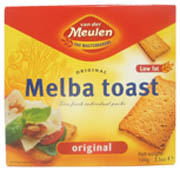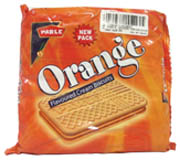
Building multi-layered interfacial membranes around a dispersed phase in an emulsion may, in fact, be a key factor in providing added protection in food systems subject to rigorous processing and other environmental pressures. Yet, there are issues that need to be resolved regarding multi-layer emulsions and their specific design characteristics, application to individual foods and long-term stability. Researchers such as D. J. McClements, PhD, at the department of food science, University of Massachusetts-Amherst, are striving to gain a better understanding of these multi-layer emulsions so that, ultimately, this viable technology can be used to create a vast array of value-added products in the food industry. One use would be extended storage of emulsions and the other a controlled release of functional ingredients from within the dispersed phase.
Naturally, acquiring basic knowledge of emulsions is essential before tackling the finer intricacies of a multi-layered system. In other words, what is an emulsion, how is it formed, what types of ingredients are used as emulsifiers, and what influences stability? Emulsion technology is clearly an involved subject. As food scientists, many of us have merely scratched the surface in terms of understanding what characterizes an emulsion, what keeps it together, and what breaks it apart. The following information will shed some light not only on core emulsion science, but also on that which controls interfacial membrane technology.

Covering the Basics
A standard definition of an emulsion typically describes two immiscible liquids, with one being dispersed as fine droplets in the other. For instance, in an oil-in-water emulsion such as mayonnaise, oil droplets are dispersed in a continuous water phase whereas, in a water-in-oil emulsion such as margarine, water droplets are dispersed in an oil phase. Emulsions are created by applying mechanical energy to the immiscible liquids, known as homogenization. Emulsifiers are surface-active ingredients that lower interfacial tension and decrease the energy needed to form an emulsion. Surfactants are amphiphilic, with one portion hydrophilic and the other lipiphilic, thereby suitably designed to be placed at the interface between the oil and water phases of the emulsion.Both natural and synthetic emulsifiers are approved for use in food. Natural ingredients include phospholipids such as lecithin, monoglycerides and its chemical derivatives, proteins such as whey protein concentrate, casein, soy protein concentrates and polysaccharides such as gums. Certain types of emulsifiers are better suited to one specific application while others are more versatile. The choice depends on the type of emulsion, processing parameters, storage conditions, and the hydrophilic/lipophilic balance of the emulsifier, as well as its ionic properties and structure.
The breakdown of an emulsion occurs through a variety of different mechanisms. Creaming or sedimentation happens because of the gravitational forces acting on phases of different densities. Non-crystallized, liquid-oil droplets have a lower density than the surrounding water phase. As a result, these lighter particles drift upward toward the surface of the emulsion, where they aggregate. This describes creaming. With sedimentation, droplets with a higher density fall downward to the bottom. The form of aggregation may be one of flocculation, where the dispersed droplets clump together but maintain individual identity, or coalescence, where droplets collide and become one big particle.
“Colloidal interactions (e.g., van der Waals, steric, electrostatic, depletion, and hydrophobic interactions) govern whether emulsion droplets aggregate or remain as separate entities, thereby impacting the characteristics of any aggregates formed such as their size, shape, porosity and deformability,” says McClements. “The bulk physicochemical properties and stability of many emulsions depend on the extent of droplet aggregation and the characteristics of any aggregates formed. Generally, droplets tend to aggregate when attractive interactions dominate, but remain as individual entities when repulsive interactions dominate.”
Attractive forces such as bridging and depletion promote aggregation of droplets in the dispersed phase. Bridging flocculation occurs when a biopolymer adsorbs either to the surface of more than one droplet, or the emulsifier that forms the interfacial membrane around the droplet, explains McClements. Depletion flocculation results when non-adsorbed colloidal molecules are present in the continuous phase. These colloidal molecules include surfactants and biopolymers. An osmotic exclusion effect created by a void of colloidal molecules surrounding the droplets increases the attractive forces that, in turn, cause flocculation. Although flocculation is generally detrimental to emulsion stability because it causes an increase in creaming and viscosity, there are times when these aggregated droplets form a desirable texture, as in dressings, for example, adds McClements.
A whey-protein stabilized emulsion provides an excellent example of how hydrophobic interactions may induce flocculation. There are strong electrostatic repulsive forces at work in a whey-protein stabilized emulsion held at room temperature (pH 7, 0mM NaCl), which contains dispersed droplets that have some non-polar regions exposed in the continuous phase. However, when the emulsion is heated above 70ºC, the protein uncoils, exposing non-polar amino acids formerly contained within the interfacial membrane which, in turn, increases the hydrophobicity of the droplet. Droplets that were once separated by repulsive forces are now aggregated by attractive forces induced by the hydrophobic nature of the droplets.1
Interfacial Engineering
In a project entitled “Utilization of Interfacial Engineering to Improve Food Emulsion Properties,” McClements and his staff of researchers used emulsifiers such as phospholipids, proteins and polysaccharides in combination with homogenization or stirring to build multi-layered interfacial membranes around oil droplets dispersed in water. “The underlying principle of interfacial engineering technology is electrostatic deposition of charged biopolymers onto oppositely charged emulsion droplets…,” says McClements. In doing so, interfacial membrane characteristics including composition, electrical charge and layer thickness can be controlled to induce greater emulsion stability.A two-layer interfacial membrane is formed in two steps. The primary emulsion is created by homogenizing an oil-in-water emulsion with a charged emulsifier. Then, a secondary emulsion is developed by adding a biopolymer to the primary emulsion. The biopolymer and the droplets in the primary emulsion should be oppositely charged. Mechanical agitation may be necessary to disrupt any aggregated particles created by the formation of the second layer. Additional layers may be added, although economic feasibility may preclude the use of large numbers.
While factors that influence multi-layer interfacial membranes made from synthetic materials containing colloidal particles are well known, a better understanding of the properties affecting multi-layered interfacial membranes composed of food-grade ingredients surrounding oil droplets is needed. For instance, each individual emulsifier or biopolymer may react differently as processing parameters change. Also, the magnitude of the electrical charge might influence long-term stability of the membrane.
The type and magnitude of the electrical charge can be controlled by varying the emulsifier selection and/or altering the pH above or below the isoelectric point of a protein-stabilized emulsion. Biopolymers also vary in composition and electrical charge. Currently, optimal stability of a multi-layered emulsion must be designed by trial and error. Additional research will ultimately reveal the best combination of emulsifier ingredients and preparation methods required for long-term stability of specific emulsion-based food systems.
Emulsions on the Horizon
One of the objectives of emulsion research is to form a better understanding of those factors that influence stability when emulsion-based products are subject to the rigors of thermal or high-pressure processing, mechanical shearing, dehydration, freeze/thaw cycling, and exposure to ingredients that alter the chemical, pH or electrolyte composition of the food matrix. Continued study of emulsion technology will lead to improvements in texture, appearance, flavor, shelflife and cost of food systems.Encapsulation and delivery of functional components via emulsion technology will also lead to the availability of more healthful products. Multilayer interfacial membranes will be designed for controlled release. One layer may protect ingredients susceptible to enzyme degradation in the mouth, while another layer protects against acid conditions present in the stomach, thereby improving bioavailability of an ingredient delivered to the small intestine for gut health. Regardless of the intended application, layer-to-layer emulsions have tremendous potential for use throughout the food industry.
1Research and support for this article was provided by D.J. McClements, PhD, department of food science, University of Massachusetts-Amherst, who also is the author of Food Emulsions: Principles, Practice and Techniques, 2nd edition, 2004, CRC Press, Boca Raton, Fla. He can be reached at: mcclements@foodsci. umass.edu.
Sidebar: Emulsifiers: To E or Not to E
The Codex Alimentarius (Latin for “food law” or “food code”) is a collection of standards, guidelines and documents maintained by the Codex Alimentarius Commission (Rome). The Commission, established by FAO (The Food and Agriculture Organization of the United Nations) and WHO (The World Health Organization), has general standards or recommendations for food additives and their labeling. Internationally, countries have worked towards harmonization of these standards.To help regulate certain food additives and inform consumers of their presence in foods, a system of numbers starting with the letter “E” was first developed in Europe. The Codex Alimentarius Committee adopted and extended the numbering system. INS (International Numbering System) numbers were developed by an arm of Codex. (See www.starch.dk/isi/applic/ E-numbers.htm for one effort to relate E and INS numbers for starch-derivative ingredients.)
Generally, in European countries, ingredients with E numbers are prefixed by the letter E, but certain countries outside Europe (primarily Australia and New Zealand) use only the number. An additive with an E number does not guarantee any particular country will allow its use in foods, however.
For example, a quick look at Mintel's Global New Products Database (GNPD, Chicago) shows that the emulsifier sodium stearoyl lactylate appears as “E481” on the label of Van der Meulen's (Hallum, Netherlands) melba toast, just introduced in the Czech Republic, and Parle Biscuits' (Mumbai, India) cookies, recently launched in that country. However, it appears only as “481” on the label of Green's General Foods' (Glenndenning, Australia) new Basco Gluten Free Foods fettuccine carbonara, introduced in Australia this year, and Bruce Foods' (Texas, U.S.) shelf-stable burrito tortillas launched in Vietnam late last year.
--Claudia D. O'Donnell, Chief Editor